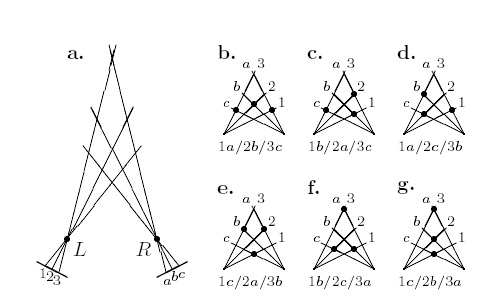Next: Intensity-based correspondence analysis
Up: Stereo Vision
Previous: Constraints
Correspondence Analysis
The previous section showed how to determine depth from disparity. But the calculation of corresponding features in both images is an additional problem which has to be solved. Corresponding features are projected points in both images that have the same object point in space. If the image features would be indistinguishable, then having ![]() features would led to
features would led to ![]() correspondences which would all have different spatial interpretations. As soon as the correspondence problem is solved, the spatial representation of a feature can be computed through triangulation. The search for corresponding points in both images is an ill-posed problem2.3.
correspondences which would all have different spatial interpretations. As soon as the correspondence problem is solved, the spatial representation of a feature can be computed through triangulation. The search for corresponding points in both images is an ill-posed problem2.3.
 |
Figure 2.11 shows the famous double-nail illusion (Krol & van de Grind 1980, von Campenhausen 1993). Also the human visual system is not able to solve the correspondence problem always correctly, this is best understood by example. If one holds two needles in the centre plane of the eyes one behind the other and covers the ends with a bezel, the needles appear next to each other. In this case the image of the front needle in the left eye is merged with the needle in the back in the right eye. The corresponding problem is reasonable solved, even if it is physically false.
In principal there are two different approaches to solve the corresponding problem, namely intensity-based and feature-based correspondence analysis. The former approach compares the grayscale distribution between the two images, the latter extracted features. Both techniques have their advantages and disadvantages and will be discussed in the next chapters.
Next: Intensity-based correspondence analysis
Up: Stereo Vision
